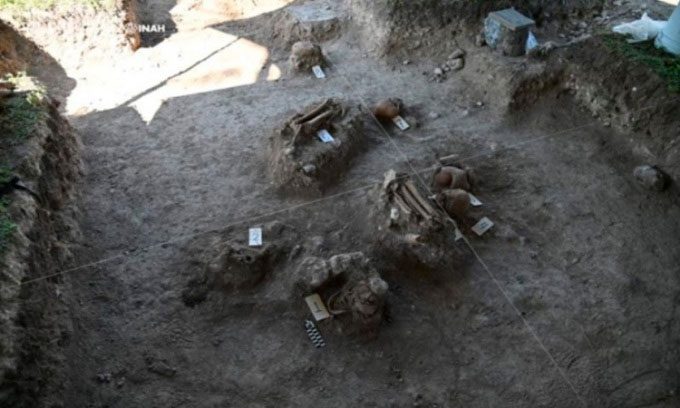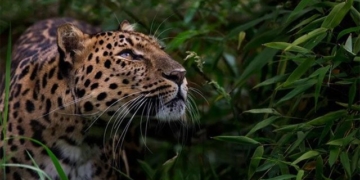The decapitated remains of 20 young men at a Maya pyramid in southern Mexico suggest that this structure served as a monument.

Some skeletons at Structure 18 pyramid. (Photo: INAH).
The sacrificial victims were buried in two distinct burial clusters dug 1,200 years apart, revealing a monument that may have worshiped Maya gods for centuries, IFL Science reported on April 21. According to the research team from the National Institute of Anthropology and History of Mexico (INAH), the manner in which the victims were executed provides clear evidence that the structure is linked to death and the deity governing the underworld. They believe that the unfortunate deceased were beheaded as offerings to the pyramid, reinforcing its connection to the afterlife.
Located at the Moral-Reforma archaeological site on the Yucatan Peninsula, the pyramid known as Structure 18 was likely built in stages, requiring human sacrifices to commemorate each completed section. Consequently, there were two mass executions associated with significant events in the construction of the pyramid.
The first phase occurred at the end of the Preclassic period, spanning from 300 BC to 250 BC. Although the research team has yet to determine the exact dating of the remains, the presence of 567 accompanying ceremonial artifacts, such as beaded jewelry, spear tips, and bone needles, helps researchers place the remains within this timeframe.
Comprising 7 separate graves, the older burial cluster contains the bones of at least 12 victims, some of whom appear to have been arranged in a seated position immediately after death, while others were moved later from different burial sites. As a result, many skeletons lack consistency. The second cluster includes 13 graves from the Late Classic period, ranging from 600 to 900 AD. Among these, researchers identified 8 decapitated individuals, positioned separately as offerings to the pyramid.
Both burial clusters consist of young adult males showing signs of cranial shape alteration. This practice of head shaping at a very young age was common in pre-Columbian Maya society. Additionally, two individuals had modified teeth, possibly due to grinding and embedding jade into their teeth. The research team’s conclusions are still preliminary, and excavation work at Moral-Reforma is ongoing.


















































